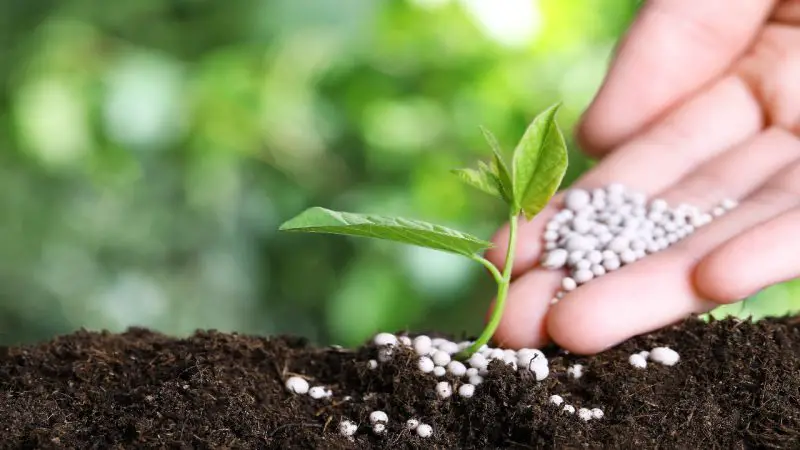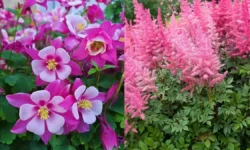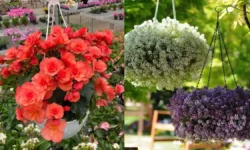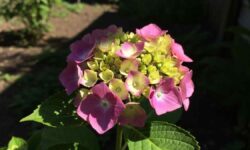Gardening is both an art and a science that requires attention to detail, patience, and knowledge of how plants thrive. One of the key factors in a successful garden is providing the right nutrients to your plants. Fertilizers play a critical role in this, supplying essential elements that plants need to grow strong, healthy, and vibrant. Among various types of fertilizers, the 13-13-13 fertilizer stands out as a balanced and versatile choice.
In this article, we will explore why 13-13-13 fertilizer is ideal for all types of gardens, diving into its composition, benefits, application methods, and the science behind its effectiveness.
Table of Contents
Understanding 13-13-13 Fertilizer: What Does It Mean?

Before we delve into why the 13-13-13 fertilizer is so beneficial, it’s important to understand what these numbers represent. The three numbers in the name refer to the percentage by weight of the three primary nutrients essential to plants: nitrogen (N), phosphorus (P), and potassium (K). Specifically, 13-13-13 means the fertilizer contains 13% nitrogen, 13% phosphorus, and 13% potassium.
Each of these nutrients has a distinct role in plant health. Nitrogen is primarily responsible for leaf and stem growth, phosphorus supports root development and flowering, and potassium aids in overall plant vigor and disease resistance. The equal ratio of these nutrients in 13-13-13 fertilizer means it provides a balanced supply, which is why it’s often referred to as a “complete” fertilizer.
Why Balanced Nutrition Matters in Gardening
Plants need a balanced intake of nutrients to flourish, but the exact requirements vary depending on the type of plant and soil condition. Too much nitrogen might promote lush green leaves but at the cost of fewer flowers or fruits. Excess phosphorus could harm the environment, while a deficiency in potassium might weaken the plant’s ability to withstand stress.
Using a balanced fertilizer like 13-13-13 ensures that plants get all three essential nutrients in equal measure. This is particularly helpful in gardens where the soil nutrient profile is unknown or in areas where the soil is generally deficient in multiple nutrients. Balanced nutrition encourages healthy root systems, vibrant foliage, and robust flowering or fruiting, making it a go-to fertilizer for many gardeners.
Versatility Across Different Garden Types
One of the biggest advantages of 13-13-13 fertilizer is its versatility. Whether you are growing vegetables, flowers, shrubs, or even lawn grass, this fertilizer meets the nutritional demands effectively. In vegetable gardens, balanced fertilizer supports early plant growth and helps maintain productivity throughout the growing season. For flowering plants and ornamental shrubs, it encourages strong blooms and overall plant health.
Lawns also benefit from the balanced nutrients in 13-13-13 fertilizer, helping grass maintain a deep green color, resist drought stress, and recover from wear and tear. Even for fruit trees and berry bushes, this fertilizer can provide the foundational nutrients needed during critical growth stages.
The Science Behind the Balanced Formula
The equal ratio in 13-13-13 fertilizer is designed to mimic the natural nutrient balance many plants require. Nitrogen fuels the production of chlorophyll, which plants use in photosynthesis to convert sunlight into energy. Without adequate nitrogen, leaves become yellow and growth slows.
Phosphorus plays a crucial role in energy transfer within the plant, encouraging strong root growth and flower formation. It also assists in seed production and improves the plant’s ability to withstand cold temperatures.
Potassium helps regulate water uptake and strengthens cell walls, increasing the plant’s resistance to diseases and environmental stress. This nutrient also supports the overall metabolism of plants, including protein synthesis and carbohydrate transport.
When combined in equal proportions, these nutrients work synergistically to promote balanced growth, making 13-13-13 fertilizer a scientifically sound choice for general garden use.
How to Apply 13-13-13 Fertilizer for Optimal Results
Proper application is essential to maximize the benefits of 13-13-13 fertilizer. The first step is to conduct a soil test to understand your garden’s nutrient status, though the balanced nature of this fertilizer makes it safe for most soils.
For vegetable gardens, the fertilizer should be worked into the soil before planting. This allows the nutrients to be readily available when seedlings or seeds begin to grow. During the growing season, side-dressing with 13-13-13 can provide an additional nutrient boost.
For lawns, the fertilizer is best applied evenly across the surface, ideally when the grass is actively growing. Watering after application helps dissolve the granules and allows nutrients to penetrate the soil.
When feeding flowering plants and shrubs, applying the fertilizer around the drip line of the plant and gently working it into the soil ensures the nutrients reach the root zone where they are needed most.
Environmental Considerations and Safe Usage
While 13-13-13 fertilizer offers balanced nutrition, it’s important to use it responsibly. Over-fertilization can lead to nutrient runoff, which may contaminate waterways and harm aquatic life. Applying the correct amount based on plant needs and soil conditions is crucial.
Gardeners should follow manufacturer instructions carefully, avoiding application before heavy rains. Using organic mulches alongside chemical fertilizers can improve soil health and reduce nutrient loss.
By integrating 13-13-13 fertilizer with sustainable gardening practices, you can maintain a thriving garden without negatively impacting the environment.
Signs Your Garden Benefits From 13-13-13 Fertilizer
Many gardeners notice distinct improvements after applying balanced fertilizer. Plants tend to grow more vigorously, showing rich green foliage and better flowering. Roots become stronger and deeper, helping plants withstand drought or disease better.
If your garden has patchy growth, yellowing leaves, or weak stems, these could be signs of nutrient deficiencies that 13-13-13 fertilizer can help address. However, keep in mind that nutrient deficiencies can also be caused by other factors such as pests or poor soil structure, so accurate diagnosis is key.
Comparing 13-13-13 Fertilizer to Other Fertilizer Types
While 13-13-13 is a general-purpose fertilizer, other formulations focus on specific nutrient needs. For instance, high-nitrogen fertilizers like 20-10-10 are better for lawns needing rapid green-up, while bloom boosters like 10-30-20 target flowering plants.
The advantage of 13-13-13 fertilizer lies in its balance and simplicity. It reduces the guesswork for gardeners who want a one-size-fits-all solution. However, for specialized plants with unique nutrient demands, adjusting fertilizer type accordingly might yield better results.
The Role of 13-13-13 Fertilizer in Soil Health
Besides nourishing plants, 13-13-13 fertilizer also influences soil health indirectly. Nitrogen promotes microbial activity essential for organic matter breakdown. Phosphorus supports beneficial fungi that aid root absorption, and potassium improves soil structure by enhancing root growth.
When used appropriately, this fertilizer can complement organic amendments, contributing to a well-rounded, fertile garden ecosystem.
Seasonal Use and Timing for Best Effectiveness
Timing your fertilizer applications enhances their effectiveness. Early spring is an excellent time to apply 13-13-13 fertilizer in many gardens to jump-start plant growth. In growing seasons, split applications spaced several weeks apart can maintain nutrient availability.
Avoid late-season heavy feeding as it may encourage soft growth vulnerable to frost or pests. Each garden’s specific climate and plant types will influence the best timing, but balanced fertilization generally supports steady, healthy development throughout the season.
FAQs About 13-13-13 Fertilizer
What does 13-13-13 fertilizer mean?
The numbers 13-13-13 represent the percentage of nitrogen, phosphorus, and potassium in the fertilizer, respectively. Each nutrient is present at 13%, making it a balanced fertilizer suitable for general use.
Can I use 13-13-13 fertilizer on all types of plants?
Yes, 13-13-13 fertilizer is versatile and ideal for a wide range of plants, including vegetables, flowers, shrubs, lawns, and fruit trees due to its balanced nutrient content.
How often should I apply 13-13-13 fertilizer in my garden?
The frequency depends on the plant type and soil condition, but typically, it can be applied once before planting and as a side-dressing during the growing season every 4 to 6 weeks.
Is 13-13-13 fertilizer safe for organic gardens?
While 13-13-13 fertilizer is generally a synthetic fertilizer, some organic versions may exist. For strictly organic gardening, look for organic-certified fertilizers with balanced nutrients.
What are the signs my plants need 13-13-13 fertilizer?
Plants showing yellowing leaves, stunted growth, poor flowering, or weak roots may benefit from the balanced nutrients provided by 13-13-13 fertilizer.
Conclusion: The Ideal Fertilizer Choice for Diverse Gardens
In summary, 13-13-13 fertilizer stands out as an ideal choice for gardeners seeking a balanced, versatile, and effective nutrient source for their plants. Its equal ratio of nitrogen, phosphorus, and potassium caters to a wide range of garden plants, from vegetables to flowers, shrubs, lawns, and fruit trees.
By understanding its composition and benefits, applying it correctly, and integrating it with responsible gardening practices, you can foster a thriving, healthy garden all year round. Whether you are a beginner or an experienced gardener, 13-13-13 fertilizer offers simplicity and reliability that can help your garden flourish beautifully.






